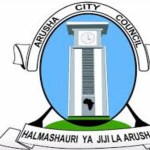About Company
Overview & History
-
Jurisdiction: One of seven administrative districts of Arusha Region, covering approximately 267 km² with elevation from ~1,160 to 1,457 m.
-
Population: As of the 2022 census, hosts about 617,631 residents, making it the most populous district in the region.
-
City Status: Originating as a German colonial post, it became a “township authority” in 1948, municipality in 1980, and acquired full city council status in 2010.
🏢 Governance & Structure
-
Leadership: Headed by a Mayor (currently Hon. Maxmillian Matle Iranqhe) and day-to-day managed by the City Director alongside heads of 13 departments.
-
Administrative Layout: Divided into 3 divisions and 25 wards (e.g., Sekei, Kati, Levolosi), with 154 streets under council’s jurisdiction.
-
Primary Mandate: Maintains peace, order, and good governance; promotes the welfare and economic development of urban residents.
-
Strategic Direction: Guided by a mission–vision framework shaping its developmental and service objectives for at least five-year spans .
📊 Economy & Infrastructure
-
Richest in the Region: Arusha is regarded as Tanzania’s wealthiest district and central hub for tourism, commerce, and institutions (e.g., EALA, AU Court).
-
Economic Composition: Business dominates (~52%), with agriculture (~19%), primary jobs (~17%), office work (~14%), and manufacturing (~6%) .
-
Key Sectors: Tourism (gateway to northern circuit), horticulture, livestock, manufacturing (e.g., brewery, pharma), and trade .
-
Transport & Utilities: Spanning a 335 km road network (85 km paved), intersected by trunk roads T2 and T5; also crossed by Usambara Railway and served by Arusha Airport.
-
Water & Sanitation: Urban water/sanitation services transferred to AUWSA; Arusha City Council handles these services in peri‑urban areas.
🏥 Education & Healthcare
-
Schools: 154 primary (~103,000 pupils) and 52 secondary schools (split evenly public/private).
-
Higher Education: Hosts institutions like Arusha Technical College, Open University of Tanzania, University of Arusha, SAUT, among others.
-
Health Facilities: Features 5 hospitals (1 public, 4 private), 16 health centers, and ~60 dispensaries; notable hospitals include Mount Meru RRH and Arusha Lutheran Medical Centre.
🌳 Environment & Urban Planning
-
Topography & Climate: Situated beneath Mount Meru, the climate is temperate (Cwb) with two rainy seasons and average temps between 17–34 °C.
-
Land Management: Town planning, land surveys, and development control are ongoing—though informal settlements still pose challenges.
-
Waste Management: City produces ~550 tons/day of waste, capturing about 81%, with rest reused or remaining uncollected.
-
Green & Recreation Spaces: Key protected areas include Kijenge Hill Forest and several urban parks.
⭐ Notable Points & Future Developments
-
Diplomatic Landmark: Home to EALA, AU Court, and previously hosted ICTR—earning it the nickname “Geneva of Africa” .
-
Upcoming Stadium: The new Arusha Sports Stadium (30,000 seats) is under construction in Olomoti ward, targeting a 2026 opening ahead of AFCON 2027.
Summary Table
| Category | Highlights |
|---|---|
| Area & Population | ~267 km², ~617,600 residents |
| Govt Structure | Mayor + City Director; 13 departments |
| Economy | Tourism, trade, education, agriculture |
| Infrastructure | Road & air transport; water/sanitation via AUWSA |
| Education | 154 primary, 52 secondary, multiple universities |
| Health | 5 hospitals, 60+ dispensaries |
| Environment | Temperate highland climate, 2 rainy seasons |
| Strategic Role | Diplomatic hub & gateway to northern safari circuit |
| Growth Outlook | Rapid urban development & investment potential |



Be a First Reviewer